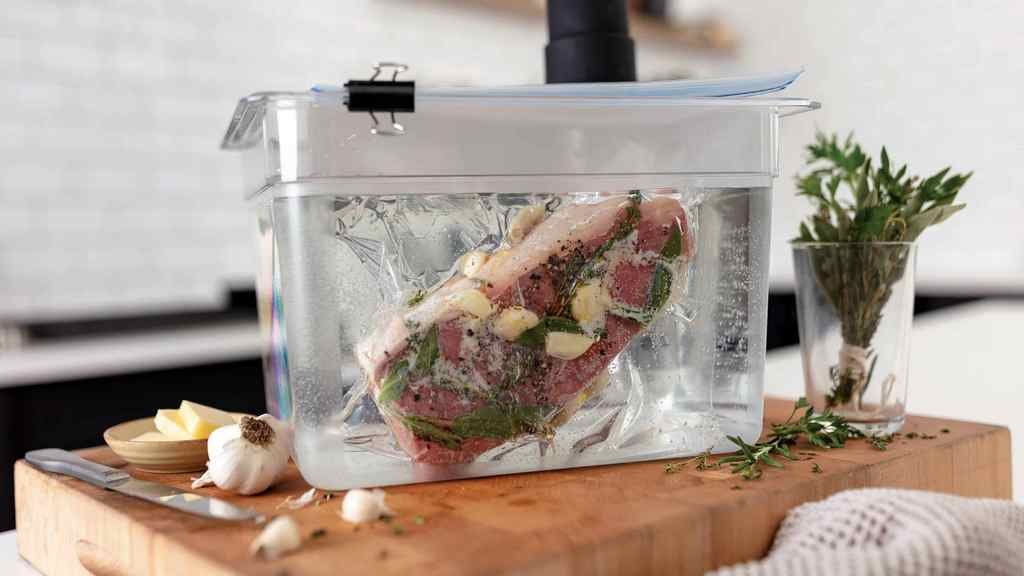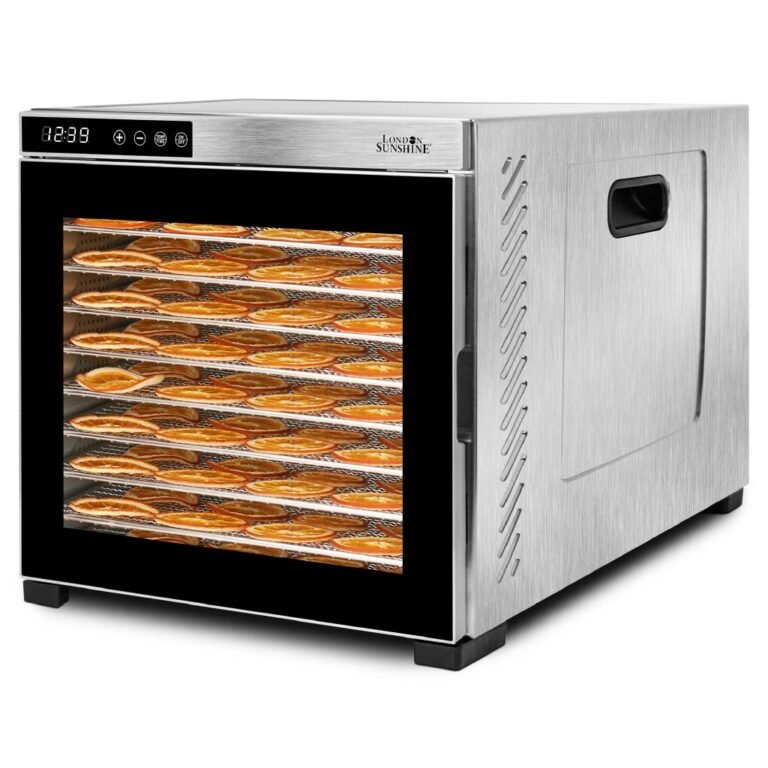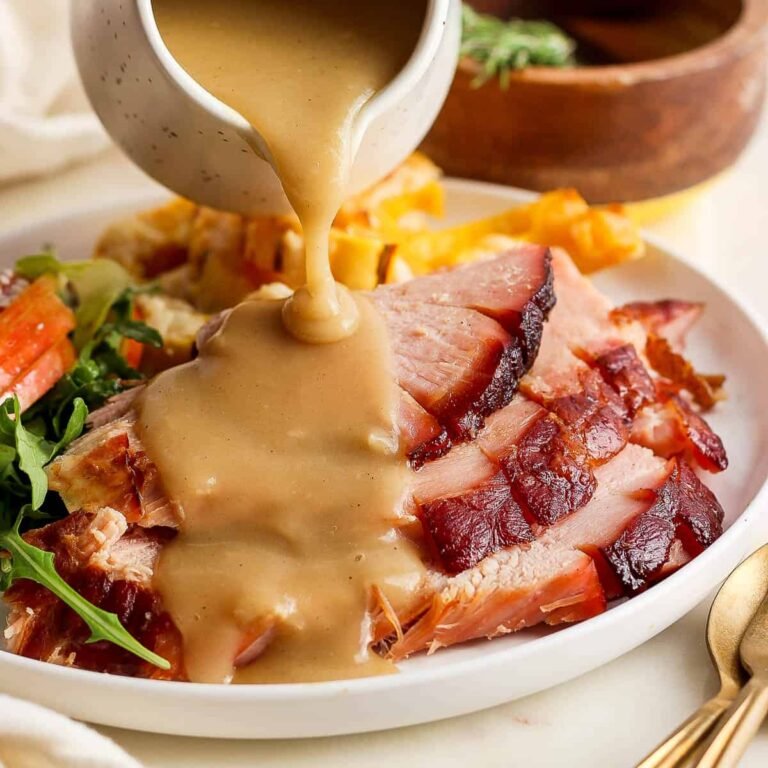Do You Really Need a Vacuum Sealer for Sous Vide Cooking?
Sous vide is a cooking method. It involves putting food in a water bath. This bath is heated to a specific temperature.
This keeps the food fresh. It also stops it from taking on unwanted flavors or odors from the water.
Vacuum sealing also allows you to cook the food evenly by removing air from the bag. This method can achieve perfectly cooked, tender, and juicy meat, fish, and vegetables.
But the question is, do you need a vacuum sealer for sous vide cooking? Let’s find out.
What is a Vacuum Sealer?
A vacuum sealer is a kitchen tool designed to remove air from a bag or container before sealing it shut. Removing oxygen slows bacterial growth and stops freezer burn. This is great for storing meats, vegetables, and leftovers. This airtight process not only preserves food but also locks in flavor and freshness.
There are a few main types of vacuum sealers available on the market. Handheld sealers are compact and convenient, perfect for occasional use. External sealers, the most common type, work with special vacuum bags and are ideal for everyday kitchen storage. Chamber sealers, often used in restaurants, handle liquids and bulk sealing with ease but come with a higher price tag.
| Type | Best For | Cost Level |
| Handheld Sealer | Light home use | Low |
| External Sealer | Everyday storage, sous vide | Medium |
| Chamber Sealer | Liquids, bulk food sealing | High |
A vacuum sealer has clear benefits. It helps food last longer, reduces waste, and keeps meals tasting fresh.
| Check out: How Many Steaks Can You Sous Vide at Once? |
Is There A Need For A Vacuum Sealer To Sous Vide?
Not really. Using a vacuum sealer for sous vide [1] cooking is not strictly necessary, but it has several advantages.
Vacuum sealing keeps food fresh. It removes air from the bag, so food doesn’t absorb unwanted flavors or odors from water.
This also allows for even cooking, as the vacuum-sealed bag conforms to the shape of the food, eliminating any air pockets.
“Spaghetti can be eaten most successfully if you inhale it like a vacuum cleaner.”
– Sophia Loren, Actress
Additionally, vacuum sealing can help marinate the food while it cooks, as the flavors are trapped within the bag.
Other methods, such as using a zip lock bag and manually removing the air with a straw or a water displacement method, can be used without vacuum sealing.
Still, they may not provide the same level of protection and result in uneven cooking.

Pros & Cons Of Using Vacuum Sealer For Sous Vide
Pros:
- Keeps food fresh: Vacuum sealing keeps food fresh. It removes air from the bag, so food doesn’t absorb unwanted flavors or odors from water.
- Even cooking: Vacuum sealing helps cook food evenly. The bag fits the food’s shape and removes air pockets.
- Marination: Vacuum sealing can also help to marinate the food while it cooks, as the flavors are trapped within the bag.
- Longer storage: Vacuum sealing can extend the shelf life of the food, allowing for longer storage in the freezer.
Cons:
- Cost: Vacuum sealers can be costly, especially for those who use sous vide infrequently.
- Space: Vacuum sealers [2] can take up a lot of space, which can be an issue for those with limited kitchen space.
- Maintenance: Vacuum sealers require regular cleaning and maintenance to ensure they work properly.
- Limited bag size: Some vacuum sealers can’t hold larger bags. This can be a problem when cooking big cuts of meat.
Alternative Options For Sealing Food
- Ziplock bags: One popular alternative is using a ziplock bag. Place the food in the bag, seal it, and then use the water displacement method to remove the air. This is done by slowly lowering the bag into the water and keeping the seal above the waterline. The pressure from the water will push out the remaining air from the bag.
- Mason jars: Another alternative is using mason jars. This is an excellent choice for liquids and small items that fit into a jar. Fill the jar with food, leave enough headspace for expansion, and close the lid.
- Foil or plastic wrap: You can also use aluminum foil or plastic wrap to seal the food. This is a viable option for small items such as herbs, spices, or small cuts of meat.
- Plate and plastic wrap: Cover it with plastic wrap. Press down the edges to remove air and seal tightly.
| Read: Is Vacuum Sealing The Same As Canning? |
How Does Vacuum Sealing Affect The Taste & Texture Of The Food?
- Taste: Vacuum sealing can enhance the natural flavors of the food by trapping them inside the bag, allowing the flavors to infuse and marinate the food while it cooks. This can result in a more flavorful and delicious final dish.
- Texture: Vacuum sealing can also improve the texture of the food by removing the air from the bag and creating an airtight seal. This allows the food to cook evenly and retain more natural juices, resulting in a more tender and juicy final dish.
- Preservation: Vacuum sealing helps keep food fresh. It removes oxygen from the bag, which slows oxidation. This process helps maintain the color and texture for longer.
- Protection: Vacuum sealing can also protect the food from bacteria and other microorganisms that can cause food spoilage and food poisoning.
FAQs on Vacuum Sealer for Sous Vide Cooking
Does sous vide have to be airtight?
Sous vide cooking doesn’t have to be airtight, but it can improve your dish’s outcome.
Vacuum sealing food and putting it in an airtight container helps it cook evenly. The bag fits the food’s shape, so there are no air pockets.
Is vacuum sealing better than Ziploc?
Vacuum sealing is generally better than using Ziploc bags for sous vide cooking.
Vacuum sealing provides a better seal and removes all the air from the bag, allowing even cooking, better preservation, and marination of the food.
Ziploc bags, on the other hand, even though they can be used for sous vide cooking, are not designed for it and can’t provide the same level of protection, resulting in uneven cooking.
Final Thoughts
Vacuum sealing isn’t required for sous vide cooking, but it offers key benefits. These can significantly improve your dish’s outcome.
Vacuum sealing keeps food fresh. It stops unwanted flavors or odors from the water. Plus, it helps with even cooking and marinating.
Vacuum sealing can also help to preserve the food and ensure its safety. However, it is important to note that vacuum sealers can be costly, take up a lot of space, and require regular maintenance.
Alternative options such as ziplock bags, mason jars, aluminum foil, or plastic wrap can also be used. Still, they may not provide the same level of protection and result in uneven cooking.
References:
- https://www.thespruceeats.com/sous-vide-faqs-and-guide-2313695
- https://www.goodhousekeeping.com/cooking-tools/g34698988/best-food-vacuum-sealers/

Kathy is a restaurateur, artist, and blogger. After spending more than 10 years in the restaurant industry, she has decided to go digital and share her expertise and experience online.







